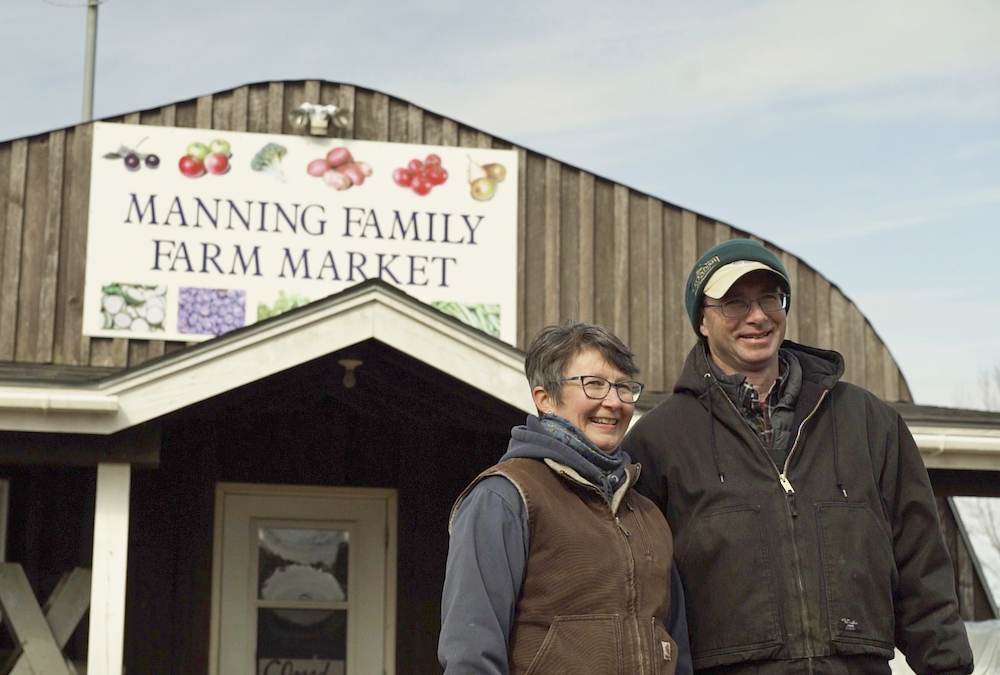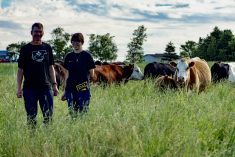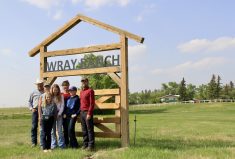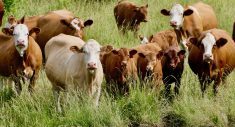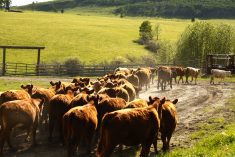In a place described by poets as “the forest primeval,” Dean and Catherine Manning have built a business to be proud of in Nova Scotia’s agricultural paradise. With a unique climate and fertile farmland developed from salt marshes more than 300 years ago, all kinds of agricultural production flourish near the Minas Basin, from orchards and greenhouses to cash crops and livestock.
Despite these natural advantages for agriculture, the Manning Family Farm at Falmouth, Nova Scotia, is subject to the challenges of encroaching urbanization, such as land availability.
Read Also
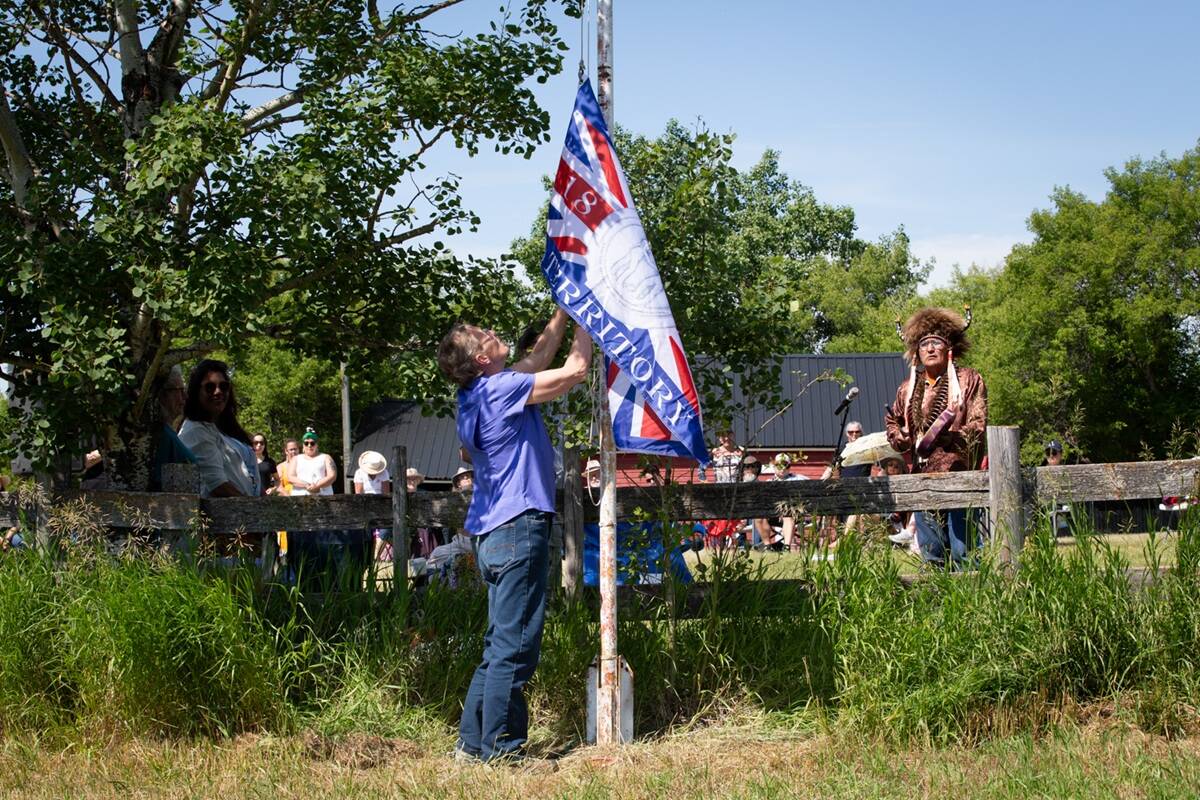
Treaty Land Sharing Network expands reach in Saskatchewan and Alberta
The Treaty Land Sharing Network, which connects land holders with First Nations and Metis people, has expanded since it began in 2018
“Land doesn’t come available for sale very often, so I think we really have to manage what we have here tightly to keep it as productive as we can, but at the same time making sure we’re protecting what we have as well,” says Catherine Manning.
This perspective and an understanding of the importance of working with the environment has guided the Manning family in running an efficient cow-calf operation and market garden that makes use of good stewardship practices to manage risk and allow wildlife to coexist with their cattle. When the Manning Family Farm was named the 2021 recipient of The Environmental Stewardship Award (TESA) this September, the family’s successes in sustainably managing their land while working to build positive relationships with consumers were on display for the Canadian beef industry to celebrate.
“The Manning Family Farm is a leader in their community and the Canadian beef industry with their outreach efforts to the general public and their open-door policy to educate consumers wanting to know more about how beef cattle are raised,” said Duane Thompson, CCA’s environment committee chair, in a press release.
Receiving this prestigious award, now in its 25th year, took the Mannings by surprise, and for them it’s a true honour to be recognized at this level. “We were just excited even with the nomination. To be nominated by your peers, in our world, that means a lot,” says Catherine.
When you consider that farming with an eye on sustainability has always been a cornerstone of this family’s operation, however, this recognition isn’t so surprising. “My grandfather used to rent this farm, and then when he was able to purchase it in the early ’60s he did, and they had the typical mixed farm at the time,” says Dean.
Dean’s parents implemented several conservation practices throughout the years, which Dean and Catherine built upon when they returned to the farm in 1997. Today, their cow-calf operation consists of 80 head of purebred and commercial females. The cow herd is made up of predominantly Angus genetics, as well as some Simmental and Limousin, and most of their calves are sold at weaning or backgrounded before being sold to a feedlot.
The Mannings’ land base covers around 500 acres, and they grow most of their feed. To expand their cow herd, they’ve rented land locally where possible, and they keep 25 pairs on what was Catherine’s parents’ farm a few counties away. A few animals are kept close to home during the summer, and the entire herd winters at the home place.
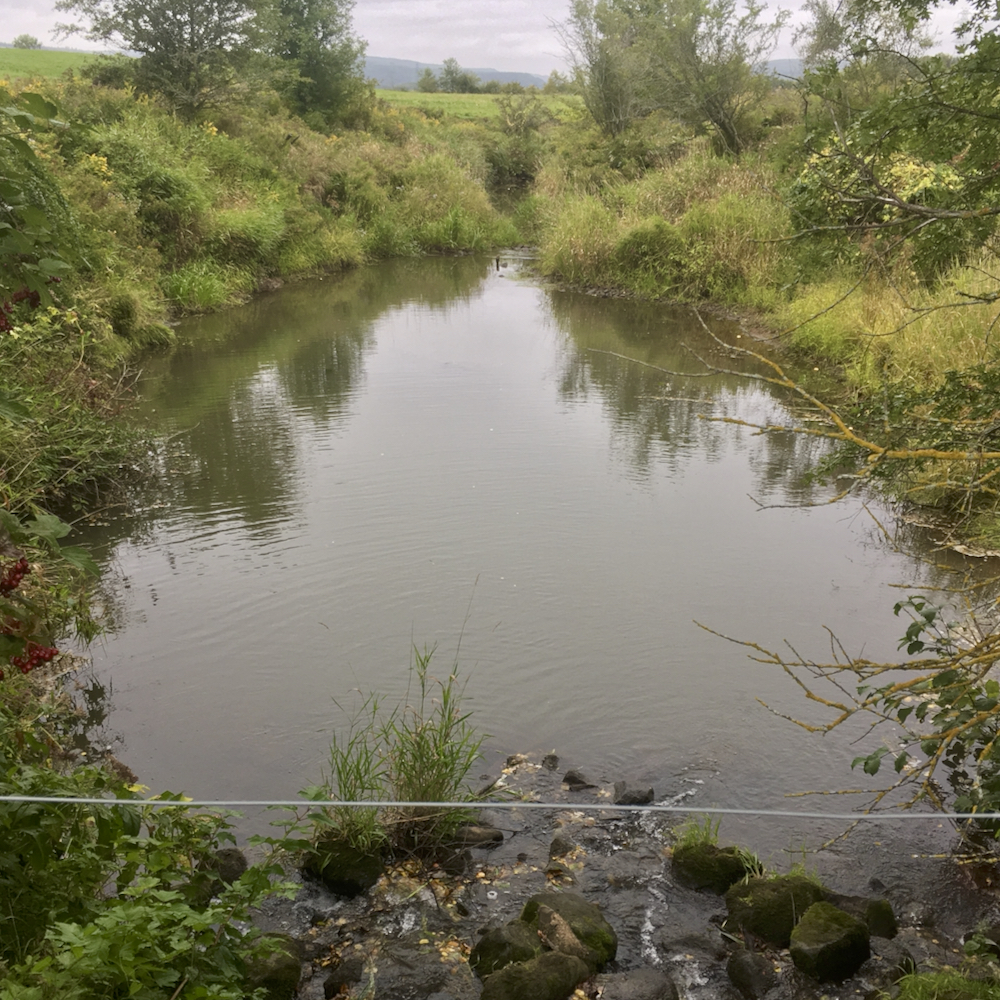
They calve twice a year to balance the workload with their market garden business, in which they sell vegetables through wholesale markets, weekly farmers markets and their online store. To complement this service they also finish some of their calves and sell beef directly to their customers.
Working with the landscape
The lifeblood of this farm is the brook that runs through it, a favourite spot for ducks and Canada geese to return to each spring. The brook is also home to the Gaspereau, a local fish species, as well as plenty of trout and perch. The farm’s riparian areas attract herons, beaver and even turtles that are upwards of 40 years old.
Caring for these riparian areas was an early stewardship project for the Mannings, who fenced out the brook and wetlands throughout the farm to create buffer zones for wildlife.
More than a decade ago, the opportunity for a natural resource biologist to conduct a biodiversity report on their farm opened their eyes to the range of species on their land. Seeing someone else get excited about species the Mannings saw all the time had an impact, Catherine explains.
“It increased our awareness of all these things that interact,” says Dean. “We got a really good report card.” They learned how their practices benefit these animals, such as leaving grassed areas in some pastures for birds and mammals to raise their young.
More recently, the region’s normally rainy climate has given way to extreme weather occurring more frequently, which has prompted the Mannings to adapt their system to these changes. Heavy rains, for example, can pose an issue for the nutrient-rich farmland surrounding the dikes, areas ideal for hay, pasture and cereal crops. Considered to be the best agricultural land in Atlantic Canada, these were once salt marshes in high tidal areas that were drained and managed by Acadian farmers through dike systems.
“It’s so important to have the drainage working properly on those. Sometimes it’s easy not to keep the ditching cleaned out, but I know in the last few years it’s so important to keep the main drains cleaned up,” says Dean. “It’s not something you do every year, but you just have to find the weak spots that are backing water up.”
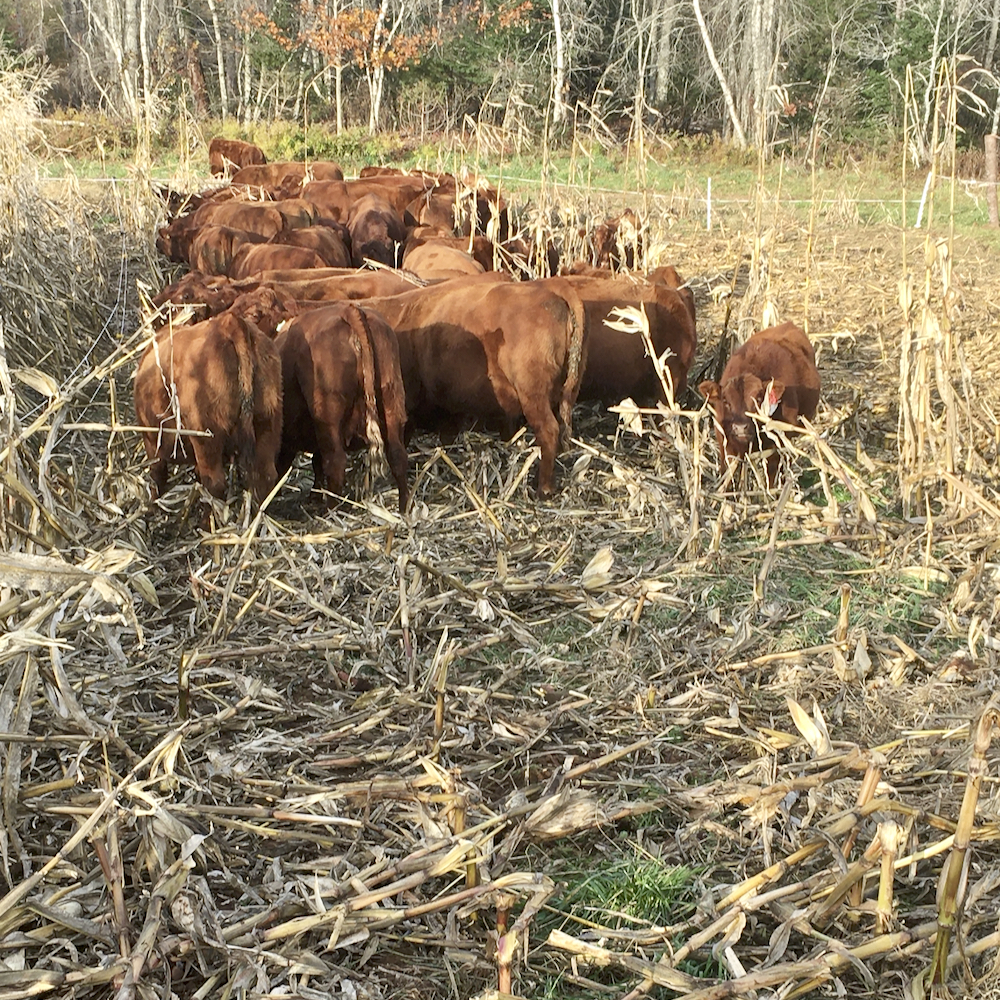
On the other side of the coin, the summer of 2020 saw extremely dry conditions throughout the Maritimes, something unusual for the region and troubling for producers. The Mannings saw this firsthand in one of their pastures.
“We had cattle there for 20 years and had a pond that’s never gone dry,” Dean recalls.
When this reliable water source went dry last summer, it showed the Mannings that different management practices based on moisture levels may be needed. “It just created that much more awareness that we just can’t rely on what we did in the past,” he says.
Dry conditions also prompted the family to rethink some of their grazing practices. They stockpiled forage in some pastures so they could choose how best to use this feed after the growing season.
“We either maybe graze it once or we may graze it twice, or we may graze it and then take it off for hay towards the end of the season, or use it a little bit later when the animals all come back,” says Dean.
This new grazing plan also led to changes in how they winter their cattle. While many producers in the Maritimes traditionally house cattle in barns during winter, the Mannings were short on space to do so, and the natural forested landscape provided a welcome alternative.
“We’ve got a bunch of trees, and we started feeding them there in the fall,” says Dean, who reports there were no negative impacts on the cattle. “We got thinking, ‘Well, let’s look at what’s our natural advantage here.’ We’ve got those old drumlin hills, I’d say, that’s left from the glacier that’s solid gravel underneath, so there’s pretty good drainage on them and out of the wind, so those were our feeding sites.”
As well, the natural shelterbelts and forested areas increase the water-holding abilities of wetlands and provide habitat for species such as owls, hawks, bald eagles, red fox, mink, raccoon, whitetail deer, coyotes and pheasants.
Their decision to start grazing cover crops was also a result of adapting to extreme weather events. “It was so wet one year that we couldn’t cut corn, so we grazed it and it worked reasonably well,” says Dean.
From there, they began experimenting by seeding cover crops after harvest or grazing. “This spring when we finished up a piece with the grazing corn … we were able to go in and disc it twice and seed it down to alfalfa, a grass mix, and we got a really good stand establishment on it.”
Building public trust
Regular interactions with their vegetable and custom beef clients have impressed upon the Mannings the importance of being aware of the public’s perception of agriculture. The farm’s proximity to urban development has also shaped this awareness.
“We have a golf course on one side, subdivision on the front, so that’s one of the reasons why this public is so important to us because we have people all around us,” says Dean.
Their clients ask them myriad questions on both beef and vegetable production, which has taught Dean and Catherine much about both the customer’s understanding of agriculture and how best to connect with the public.
“In order to have that relationship with them, you have to be able to give them honest answers but back those honest answers up,” says Catherine. “We’ve learned that to build trust with them, they like to see proof.”
Becoming certified with Verified Beef Production Plus is one way they’ve demonstrated their commitment to safe, sustainable management practices. The farm already met all the requirements to be verified with the program when it first caught their interest. “It’s actual proof that we can provide to the customer,” says Catherine.
“It just seemed like an easy program for us to fall into and then hopefully reap some benefits out of it as far as being able to use it for marketing.”
They also see third-party audits as a great starting point for producers who want to introduce new sustainability projects to their operations. “The Verified Beef Plus audit was easy to go through, but at the same time it did make us really analyze certain things that we probably take for granted. So even going through a simple audit like that, it just makes you think about things that you see every day and you don’t give that second thought to,” says Catherine.
They recommend starting small with stewardship efforts, keeping an open mind and not being afraid to try new things. “Anything you do is going to be of benefit to your farm or ranch,” says Dean. “You can learn the best from your neighbours or fellow farmers or ranchers that are already doing some of these things because the thought process is already there.”
The opportunity to connect with and learn from other producers is something this family finds very encouraging in terms of opening up more possibilities for the Canadian beef industry. “I think there’s a lot more opportunity as producers work together and grow together,” says Dean. “The more we can work together or learn from one another or help one another out, those are all opportunities.”
Dean and Catherine’s shared enthusiasm and positivity for the future of this industry are evident when they speak about the possibilities. Closer to home, their lifelong love of raising cattle in this special place endures, and when they reflect on what they’ve created since returning to the farm, they find satisfaction in where the journey has taken them.
“When you see the improvements we’ve tried to make and mistakes we’ve made and where we are now, I think it still keeps us excited to be doing what we’re doing,” says Catherine.
With the promise of the next generation on the horizon, there’s much for this family to be excited about. “Our son is interested in the beef cattle, and he has a small herd on his own, too,” she says. “He’s still in university but I think preparing someday for that transition to have our herd in a good place where he’s happy with it, too and eventually (being able to) combine herds — I think that keeps us very much engaged where the beef herd is, too.”


